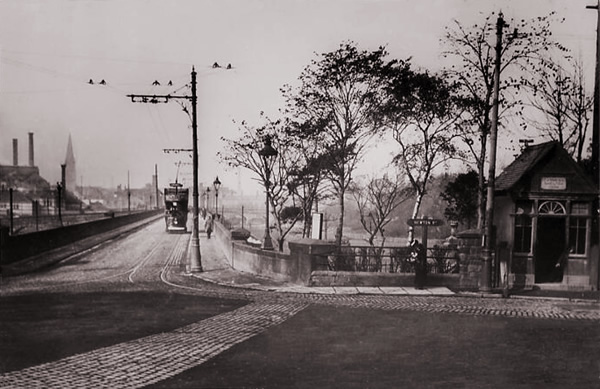Fire Brigade – Early History
There was an enforced requirement in some towns during the early 17th century for householders to have buckets or water containers next to any wells to assist with fire protection.
In 1707, the Parish Fire Act was introduced by the Government which deemed that a parish should have a fire combatting equipment conspicuously available although, in the most sophisticated cases, this was nothing more than a crude hand pump. In Burton, fire hooks and buckets were maintained out of town lands money and kept in the market place, next to the original town hall.
There is known to have been a Burton manual fire engine in 1791, when a new one was acquired by subscription. A second engine was given in the same year by Robert Peel, the owner of cotton mills at Bond End and Winshill. The engines were maintained out of a parish rate, which in 1807 paid a retaining fee of £2 to the man who worked the engine and £1 every time he was called out; he also received 3 guineas for keeping the engines in good repair.
Eight assistants were each paid £1 as a retainer and 10s. for a callout. There were also fees for four annual practice sessions. In 1835 one engine was kept in Horninglow Street opposite Holy Trinity church, and by 1844 the other was kept in the gatehouse of the former monastic precinct near the market place. A replacement engine was acquired in 1839.
By 1841 the engines were maintained jointly by Burton and Burton Extra townships, but support from the parish rate was evidently later withdrawn and in 1854 it was stated that the engines had been kept for several years by the feoffees of the town lands. The feoffees stopped payments that year and responsibility passed to the improvement commissioners. A new engine house for both engines was opened in 1855 in the former gas works in Station Street.
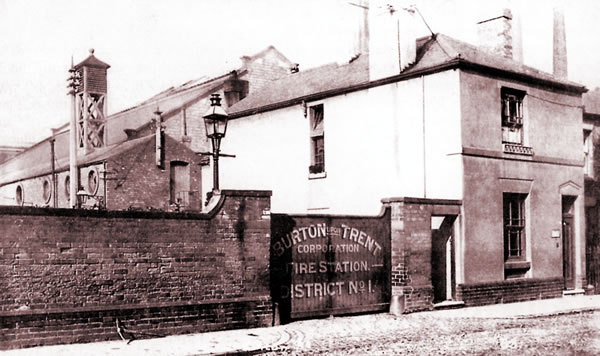
It was replaced in 1879 by one on the west side of Union Street. In 1876, while situated in Union Street, Burton Fire Brigade finally took possession of thier first Steam Fire Appliance, a Shand Mason and Company Fire Engine – although the steam was used to drive a pump not for traction; it was a horse drawn vehicle requiring two horses in harness which were borrowed in the case of a fire from local merchants!
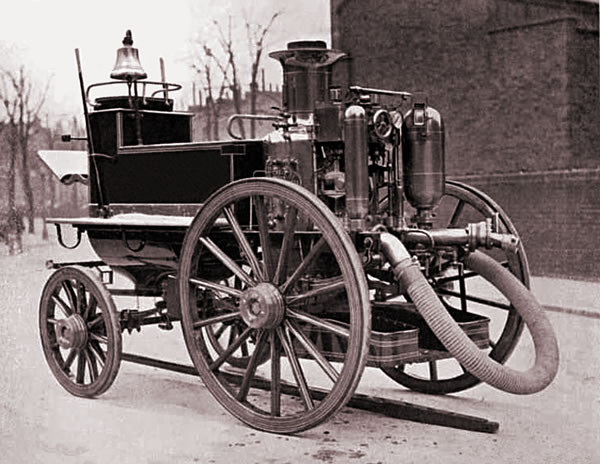
Below is one of the very few surviving pictures of the Union Street firemen, together with their steam appliance. It wouldn’t normally make it through quality control but it is just too good to omit!
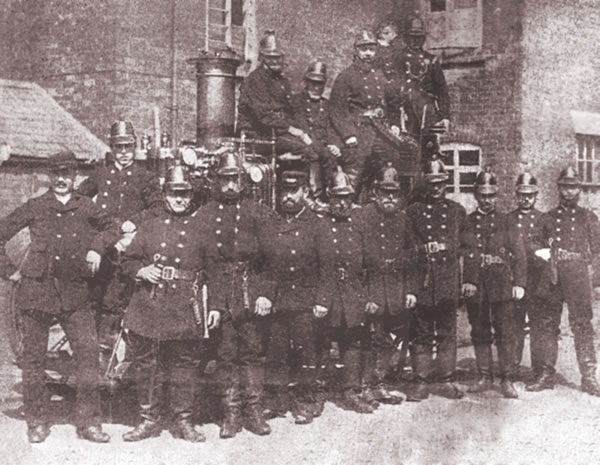
Aside from being Burton’s most effective available fire-fighting appliance, it provided a convenient stage for this later group photo, with helmets polished for the occasion.
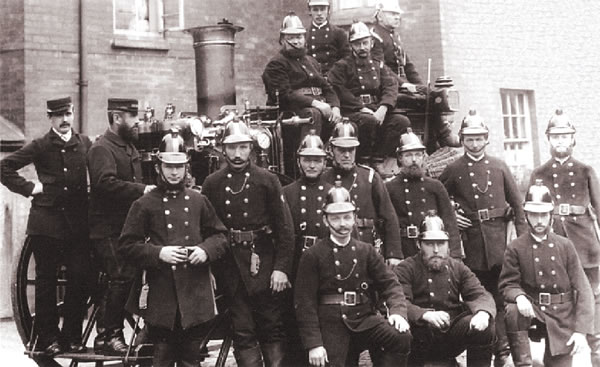
The Burton Steamer survives to this day and is still proudly displayed at the present day fire station.
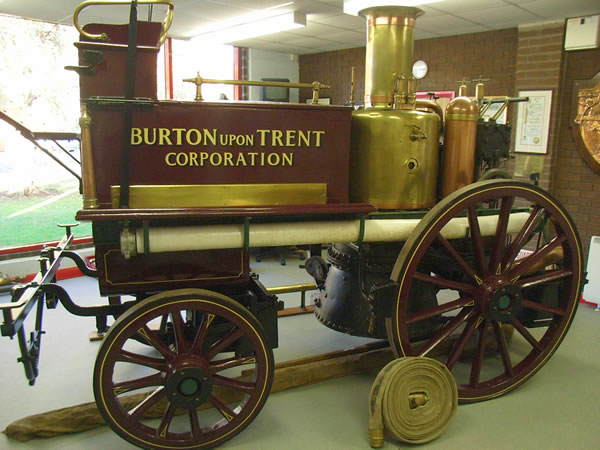
Brewery Fire Brigades
In the 1850s Michael Thomas Bass established a fire brigade for his brewery. Allsopp & Co. also had one by 1904, when it was agreed with Burton corporation that neither brigade would turn out unless requested to do so by the town brigade and that they would attend a fire outside a 5 mile radius from St. Modwen’s church only if the premises involved belonged to a partner of one of the companies. The Bass fire brigade survived until 1970.
In 1884, a fire broke out at a property in Sydney Street, Horninglow. Burton Fire Brigade failed to attend. Instead, the Allsopps Brewery brigade had to attend but were late on the scene. Following this incident, the town’s authorities agreed that a number of Hose Reel Stations should be strategically placed around the town with a hand pulled hose cart which could act as a first line of defence where necessary. These were locked with a notice informing who the custodian was.
Stations were positioned as follows:
- Outside Marston’s Brewery, Dog Lane, Horninglow (keyholder – Mr Hubbard of Dog Lane)
- Barley Mow, Main Street, Stapenhill (keyholder – publican of Barley Mow)
- Anglesey Arms, Church Hill Street, Winshill (keyholder – publican of Anglesey Arms)
- End of Trent Bridge, Newton Road, Winshill (keyholder -publican of Swan Hotel)
The last example can be seen in the below photo.
